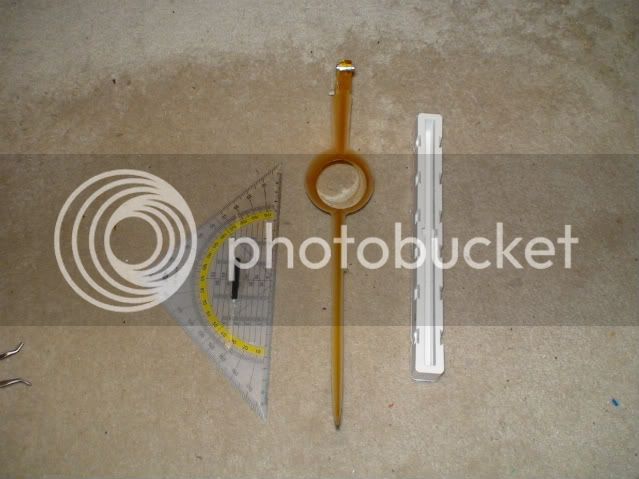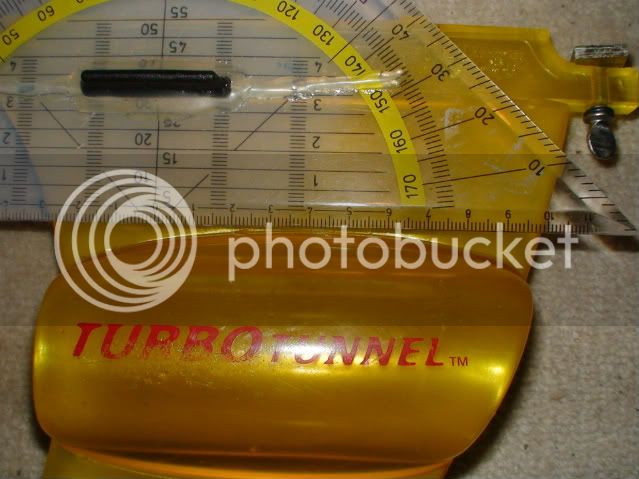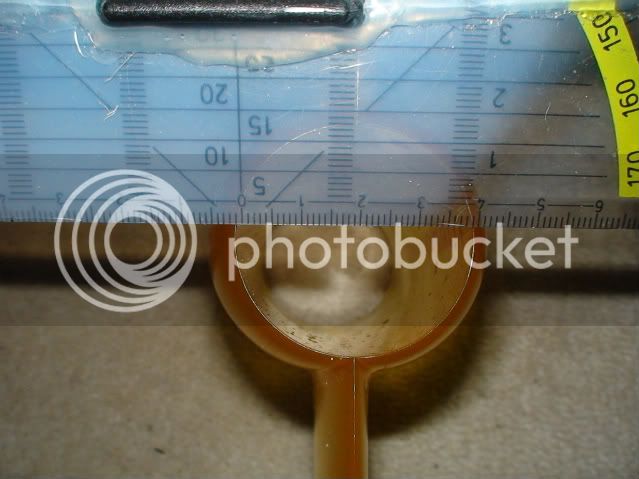Mr. Mik
1 kW
- Joined
- Sep 3, 2008
- Messages
- 390
I am trying to decide on the exact specifications of the components to be used for an electric surfboard.
Some people have taken out patents to cover this sort of project, and it seems to me that they have little understanding of surfing. It looks like they probably just patented an idea which many, many people have had, but did not bother patenting because it is sooo obvious! There is nothing ingenious about the idea, just someone trying to get rich by stopping others from marketing solutions for this application unless they pay the patent holder. The patents I have read did not contain any solutions for the practical problems that need to be solved to realize the project, just all-encompassing descriptions of the general idea that one wants to achieve. The lawyers have turned this idea into many pages, but in plain language it basically just says this:
"The patent covers any attempt to attach a motor (in)to a surfboard so that it does not stick out anywhere, therefore not negatively affecting the surfing performance".
NONE of the real problems have been solved or addressed in the patents which I have read, like how to form the channels through the board, where to place intake and outlets, how to waterproof the motor and the connections to the controller and batteries, how to cut out the power if the surfer falls off, how to prevent injuries from contact with the propeller or "live" parts whilst immersed in salt water etc. etc. etc.
It's the sort of patent that just serves to hinder progress. I'm sure other permutations of the same problem have been discussed at length by smart people for a long time, no need to start again here.
................................................................................................................................................
One patent which I have read is going on and on about using a motor to assist the surfer to paddle out, so that there would be more energy left to catch waves afterward.
Either that was written by someone with no clue about surfing, or it was tailor made to fill a niche that was left open by some other patent granted earlier. Maybe there is another patent that covers the use of a motor that is integrated into a surfboard with the intent to help gain the speed necessary to catch a wave, NOT just to paddle out.
.................................................................................................................................................
So just in case this idea has not been covered by some patent somewhere yet: This is what I am proposing to build:
A propulsion system for surfboards, capable of providing strong bursts of acceleration, to allow the surfer to catch large waves or to make it out through the "impact zone" during a short lull in a strong swell.
I'm not too sure about that poor "Ordinary Artisan" that the lawyers seem to keep on stressing at every turn, but I know that any real surfer knows the feeling!
I really hope that this will take the wind out of any further patent applications, or at least open them up to a legal challenge if needed, because the idea is now "out there" in the public domain (as if it had not been there anyway!) and generally known.
If this idea is already patented by someone in some country, who cares, we can build whatever we want for ourselves. And as far as I understand it, one can sell kits that help others to build whatever they want for themselves!
If it is patented to someone who has actually solved some or all of the practical problems, then I'll happily buy one, test it and recommend it to others if it works!
...................................................................................................................
So, finally, lets get to the fun part: Designing that gizmo and ironing out the bugs......
What I already have is a "Turbochannel" fin and a spare fin box.
(Fin boxes gets epoxied into a surfboard and allow the insertion and removal of a variety of fins. The fins and finboxes appear to be standardized. They are mostly used in longboards. The scale in the photo is metric.)


I hope it will be possible to either install a (RC-type) E-motor into the "Tunnel", or to install one or more propeller(s) into the "Tunnel", driven by the RC-type motor via a flexible drive shaft.
If the motor is mounted inside the "Tunnel", then the propeller needs to be larger than the tunnel diameter and be mounted in front or behind of it, including a protective cage of sorts to stop it from producing minced meat if touched accidentally.
..................................................................................................................................................
The Tunnel is about 130mm long:

and 40mm wide at the narrowest part at the rear end:

...................................................................................................................................................
What I need:
A) A motor / propeller combination that makes sense.
This question is very tricky, at least for me! I hope that no throttle interface (a la Fechter) or gear reduction (a la Recumpence) is needed if the right combination is used. If the motor is too strong or too fast, then the propeller might spin inside a gas bubble underneath the water without causing much propulsion. If the propeller is too big for the motor, then the motor will be prone to overheating. 500W to 750W would probably be plenty, if reasonably efficiently transformed into propulsion.
B) A safety cutoff switch, activated by pulling on the leg rope (a strong but very stretchy piece of chemical trickery between the board and the rear leg of the surfer.)
C) An on/off switch that can handle about 80A or more without welding itself shut. This switch might also incorporate the safety switch from B), if it is designed to work like the "dead man switch" on trains etc.
D) A remote control for the ON/OFF switch, either via cable or RF.
E) All of the above in "Marine grade quality."
F) or rather: Sub-marine-quality, because the pressures encountered during the inevitable wipe-outs can be equivalent to quite deep submergence. All components need to be able to withstand at least 10m of water pressure (2ATM) for a minute or so. And occasionally a few seconds of much higher pressure when they get hit by the lip of a breaking wave.
G) An "automatic motor controller" which is capable of sensing the drag caused by the propeller and supplies just enough current to the motor to spin the propeller in "Neutral" when the "ON" button is not being pushed. That would use very little battery power, I believe.
H) The battery comes very very last in these considerations, because there are many batteries that can produce the goods once the drive unit etc. is functional: All that is needed is a full power blast for a maximum of 10 seconds.
Of course, if you had a battery that can do this 30 times over,that''l be dandy (and expensive!)
Maybe you could even afford to recharge your ES (Electric Surfboard) whilst bopping up and down on the waves, through some ultra-thin solar panels used during the construction of the board instead of fiber-glass!
Chill out and catch your breath whilst the Sun recharges your batts so you can count on a boost when you try to catch the next wave....
Yeah, yeah, tell' em he's dreamin....
Some people have taken out patents to cover this sort of project, and it seems to me that they have little understanding of surfing. It looks like they probably just patented an idea which many, many people have had, but did not bother patenting because it is sooo obvious! There is nothing ingenious about the idea, just someone trying to get rich by stopping others from marketing solutions for this application unless they pay the patent holder. The patents I have read did not contain any solutions for the practical problems that need to be solved to realize the project, just all-encompassing descriptions of the general idea that one wants to achieve. The lawyers have turned this idea into many pages, but in plain language it basically just says this:
"The patent covers any attempt to attach a motor (in)to a surfboard so that it does not stick out anywhere, therefore not negatively affecting the surfing performance".
NONE of the real problems have been solved or addressed in the patents which I have read, like how to form the channels through the board, where to place intake and outlets, how to waterproof the motor and the connections to the controller and batteries, how to cut out the power if the surfer falls off, how to prevent injuries from contact with the propeller or "live" parts whilst immersed in salt water etc. etc. etc.
It's the sort of patent that just serves to hinder progress. I'm sure other permutations of the same problem have been discussed at length by smart people for a long time, no need to start again here.
................................................................................................................................................
One patent which I have read is going on and on about using a motor to assist the surfer to paddle out, so that there would be more energy left to catch waves afterward.
Either that was written by someone with no clue about surfing, or it was tailor made to fill a niche that was left open by some other patent granted earlier. Maybe there is another patent that covers the use of a motor that is integrated into a surfboard with the intent to help gain the speed necessary to catch a wave, NOT just to paddle out.
.................................................................................................................................................
So just in case this idea has not been covered by some patent somewhere yet: This is what I am proposing to build:
A propulsion system for surfboards, capable of providing strong bursts of acceleration, to allow the surfer to catch large waves or to make it out through the "impact zone" during a short lull in a strong swell.
I'm not too sure about that poor "Ordinary Artisan" that the lawyers seem to keep on stressing at every turn, but I know that any real surfer knows the feeling!
I really hope that this will take the wind out of any further patent applications, or at least open them up to a legal challenge if needed, because the idea is now "out there" in the public domain (as if it had not been there anyway!) and generally known.
If this idea is already patented by someone in some country, who cares, we can build whatever we want for ourselves. And as far as I understand it, one can sell kits that help others to build whatever they want for themselves!
If it is patented to someone who has actually solved some or all of the practical problems, then I'll happily buy one, test it and recommend it to others if it works!
...................................................................................................................
So, finally, lets get to the fun part: Designing that gizmo and ironing out the bugs......
What I already have is a "Turbochannel" fin and a spare fin box.
(Fin boxes gets epoxied into a surfboard and allow the insertion and removal of a variety of fins. The fins and finboxes appear to be standardized. They are mostly used in longboards. The scale in the photo is metric.)


I hope it will be possible to either install a (RC-type) E-motor into the "Tunnel", or to install one or more propeller(s) into the "Tunnel", driven by the RC-type motor via a flexible drive shaft.
If the motor is mounted inside the "Tunnel", then the propeller needs to be larger than the tunnel diameter and be mounted in front or behind of it, including a protective cage of sorts to stop it from producing minced meat if touched accidentally.
..................................................................................................................................................
The Tunnel is about 130mm long:

and 40mm wide at the narrowest part at the rear end:

...................................................................................................................................................
What I need:
A) A motor / propeller combination that makes sense.
This question is very tricky, at least for me! I hope that no throttle interface (a la Fechter) or gear reduction (a la Recumpence) is needed if the right combination is used. If the motor is too strong or too fast, then the propeller might spin inside a gas bubble underneath the water without causing much propulsion. If the propeller is too big for the motor, then the motor will be prone to overheating. 500W to 750W would probably be plenty, if reasonably efficiently transformed into propulsion.
B) A safety cutoff switch, activated by pulling on the leg rope (a strong but very stretchy piece of chemical trickery between the board and the rear leg of the surfer.)
C) An on/off switch that can handle about 80A or more without welding itself shut. This switch might also incorporate the safety switch from B), if it is designed to work like the "dead man switch" on trains etc.
D) A remote control for the ON/OFF switch, either via cable or RF.
E) All of the above in "Marine grade quality."
F) or rather: Sub-marine-quality, because the pressures encountered during the inevitable wipe-outs can be equivalent to quite deep submergence. All components need to be able to withstand at least 10m of water pressure (2ATM) for a minute or so. And occasionally a few seconds of much higher pressure when they get hit by the lip of a breaking wave.
G) An "automatic motor controller" which is capable of sensing the drag caused by the propeller and supplies just enough current to the motor to spin the propeller in "Neutral" when the "ON" button is not being pushed. That would use very little battery power, I believe.
H) The battery comes very very last in these considerations, because there are many batteries that can produce the goods once the drive unit etc. is functional: All that is needed is a full power blast for a maximum of 10 seconds.
Of course, if you had a battery that can do this 30 times over,that''l be dandy (and expensive!)
Maybe you could even afford to recharge your ES (Electric Surfboard) whilst bopping up and down on the waves, through some ultra-thin solar panels used during the construction of the board instead of fiber-glass!
Chill out and catch your breath whilst the Sun recharges your batts so you can count on a boost when you try to catch the next wave....
Yeah, yeah, tell' em he's dreamin....


